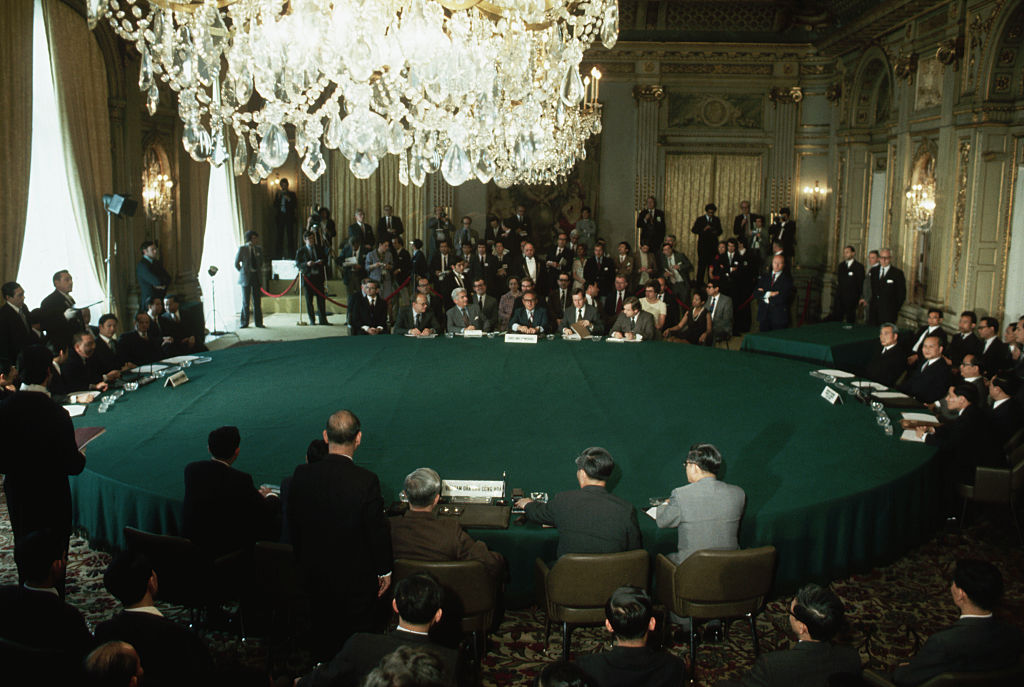Let me first introduce you to a photograph that will puzzle you.
I give you a picture of a very young lamb, indeed so young that he is not yet born, still pink and bald, sealed up in what looks like a supermarket vacuum pack.
But this is no quick-freeze lamb chop.
Tubes and wires run through the pack into the lamb.
Come back in a few days and you will see the lamb is bigger. He will go on getting bigger until he is old enough to be born.
I give you a functioning artificial womb.
More, I give you a functioning artificial womb which is being readied for human trials. Later this year the US Food and Drug Administration will announce whether the trials can go ahead.
It will be for human offspring who are about to be born pre-maturely, so pre-maturely that their lungs cannot yet function by breathing air. That would be 22 to 24 weeks gestation. Just ten per cent of babies born at 22 weeks survive.
The infant would be removed from his mother by caesarean section and popped into the vacuum pack. He will have an artificial placenta from which he will be fed oxygen and nutrients through his umbilical cord. His lungs will remain filled with amniotic fluid, as when he was still inside his mother.
All of which is, as Jack Nicholson would put it, a goddamn marvel of modern science.
But here is the thing. A lot of doctors and lawyers are talking about this marvel, about the possibilities of ethical issues.
I’m with them on that. I see several ethical issues.
But the ethics the experts are worrying about are well off the key issue.
They are worrying about whether to call this pregnancy care or neonatal care.
I mean, really? Just ask hospital management for a choice of tabs for the folder and call it either, then get on with keeping the tiny patient alive.
One expert, however, comes close to the key issue: should the baby-in-the-bag be treated differently from a normal newborn baby?
That was from Dr Chloe Romanis, talking to The Times, whose reporter described her as an expert in bioethics at Durham University.
However, the way she approached the issue set off red alarm bells.
She asked, “For instance, what if it has a fatal foetal abnormality? It’s illegal to euthanise a newborn baby, as it should be, but there might be questions about whether something’s still gestating, still being created, could be treated differently on compassionate grounds.”
“Still being created?” There he is, small and pink, breathing and eating and growing, but the Durham University “expert” thinks there may be some question if he is actually a human like the rest of us or if he should be treated “differently” because he is awfully tiny.
Which does confirm my observation that if you get enough education, you sometimes go blind.
I went to the Durham University website to see who Romanis is. First, she is no doctor and has no medical training. She is a fancy lawyer. You will not be surprised to hear that until next June she is taking a fellowship at Harvard University.
Whatever a very new individual needs, it is not analysis by a Harvard-loving lawyer. Do you have the right to own your own life? As the outgoing president of Harvard would put it, “It depends on the context”.
And yet Romanis does get close to the key question here. In law now in most countries any individual who is living in his mother’s womb is in danger of having his life ended by abortion.
In short, the abortion laws largely follow the Harvard-loving lawyer’s line that an individual not yet born has fewer rights than his mother.
He can be killed before passing through the birth canal. Or, as the fashion has it, the mother has the right to ask a medical practitioner to “end the pregnancy”.
I would say no mothers go to an abortion clinic and say, “I am pregnant, and I want him dead”.
I would give a medal for honesty to any that did.
Yet I am not here to argue for or against abortion. I am here to discuss what we will do with very young individuals who will soon be growing inside plastic bags in hospitals.
The reason is that, once a 22- or 24-weeks old individual is wired up in one of those bags, his mother has indeed “ended the pregnancy”.
But nobody is dead.
This could introduce a problem.
If in future a woman carrying a 22-week old son or daughter wants to “end the pregnancy” — which is, certainly under the law in England and Wales, entirely legal — and finds the clinic, removing the baby by caesarean section and putting him in an artificial womb would work just great.
Why would the clinic do that? Lawyers and insurance companies could come into the decision.
It would be a safer outcome. No pregnancy, and a living baby. The mother can recover for a few hours and then leave, never to see the baby again.
This could be a possibility sooner than you think. The legal reason behind freedom to abort on demand at 24 weeks or earlier is that the child was deemed by law to be non-viable. He could not live outside the womb, so he could be killed and removed.
But now, once the artificial wombs are hooked up, at 22-weeks he is viable.
So where is the reason in leaving him in a free-fire zone for abortionists? Will the law need to be changed?
If the mother is in no physical danger, pull him out of one womb, pop him in plastic bag womb, and there you have it.
Nobody dead.
Am I being cold-blooded? I hope so. I observe what happens and I avoid euphemisms.
You kill or you don’t. Whichever you do, own it. Just don’t look at a wired-up vacuum pack and tell me all you see is fudge.






Predictions for 2024: Wolves to the EU borders, Martin Selmayr to the Vatican, Roman romances